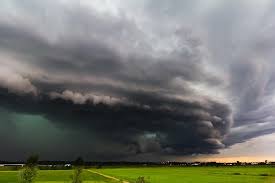
Weather Patterns & Impacts Across the Northern Midwest: Being Prepared is key
1. Severe Storms & Flash Flooding
A historic trend in 2025 shows a ~70% increase in flash flooding incidents compared to the 10-year historical average as of mid‑July, with over 4,800 reports nationwide AccuWeather+1Axios+1.
Flash flood emergencies have been declared as storms dumped 7+ inches of rain within 24 hours in parts of Illinois, and other intense events hit Missouri, Iowa, Minnesota, and South Dakota FOX WeatherABC NewsThe Washington Post.
A powerful derecho swept across North and South Dakota plus Minnesota in June (June 19–22), generating wind gusts up to 120 mph, multiple tornadoes, downed trees, and flash flooding Wikipedia+1National Weather Service+1.
In early April (April 2–7), a slow‑moving storm system triggered a major tornado outbreak and associated floodings across the Midwest and South, killing 24 people and causing widespread damage Wikipedia.
2. Extreme Heat Driving Unstable Weather
A stagnant heat dome over the central U.S. in mid‑ to late‑July is fueling humidity and instability, forming a “ring of fire” where severe storms develop along its edges across the Midwest FOX Weather+6The Washington Post+6New York Post+6.
The Midwest—including eastern Iowa, parts of Minnesota, and Missouri—has faced extreme heat watches and warnings, with heat index values reaching 105 °F to 115 °F in some areas AP News.
3. Soil Saturation & Infrastructure Stress
Many areas have endured above‑average precipitation for nearly two years, leading to persistently saturated soils in eastern Dakotas, western Minnesota, Iowa, and northern Illinois Weather Underground.
The saturated ground amplifies runoff from heavy downpours, overwhelming storm drains and increasing river and stream flood risks Illinois State ClimatologistThe Washington Post.
Why Drainage Hose Systems & Lay‑Flat Assemblies Matter
✅ 1. Rapid Runoff Channels in Flood Events
When soil is saturated and rainfall is intense or prolonged, surface water needs fast pathways away from vulnerable areas. Flexible drainage hoses—including lay‑flat assemblies—allow you to redirect runoff quickly, preventing water accumulation near foundations, drains, or equipment.
✅ 2. Temporary & Emergency Use Cases
In sudden flash flooding, a lay‑flat hose system enables rapid deployment to move water out of low areas or pre‑storm storage zones. They are lightweight, easy to roll out, and efficient for temporary needs.
✅ 3. Permanent and Semi‑Permanent Installations
For ongoing wet conditions, underground drains combined with lay‑flat hose extensions can channel subsurface seepage or overflow from sump systems, dispersing water where it diffuses harmlessly.
✅ 4. Adaptable to Tops, Sites & Conditions
These systems offer flexibility in length and routing. In unusual storms, they can be reconfigured on‑the‑fly to target new overflow areas—valuable when storm patterns deviate from normal.
✅ 5. Protecting Property & Infrastructure
Without effective drainage, water can back up into basements, erode soil, flood gravel pads, invade crawl spaces, or cause nutrient runoff in agricultural zones. Properly sized hoses reduce these risks and prevent soil erosion and contamination Illinois State Climatologist.
